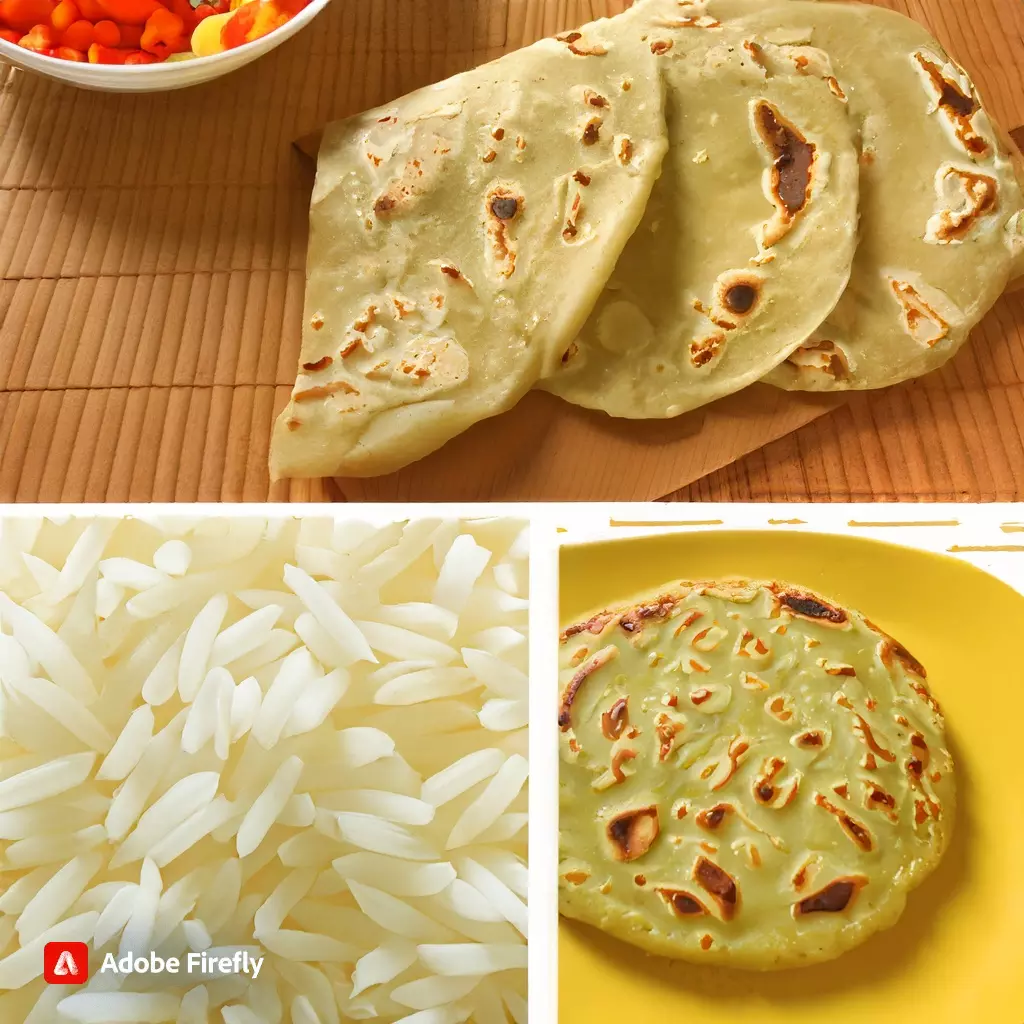In the quest for a healthier lifestyle and weight loss, many individuals find themselves at a crossroads when it comes to choosing between rice and roti, two dietary staples deeply ingrained in Indian cuisine. While well-intentioned advice often suggests cutting down on carbohydrates, the dilemma remains – should you forsake one for the other? With claims that rice can hinder weight loss and overall health, it’s time to separate fact from fiction.
Roti, crafted from whole wheat flour, and rice, a refined form of raw rice, has long sparked debates among nutritionists and health enthusiasts. Some argue that rice contributes to weight gain and offers limited health benefits, while others maintain that it is a lighter and healthier choice compared to roti.
However, the truth appears to be a more balanced perspective. Both rice and roti have similar effects on the body’s fat content, boasting comparable carbohydrate and caloric values. Additionally, their glycaemic indexes align, meaning they affect blood sugar levels in a similar manner. Both grains also provide the same amount of essential iron.
When it comes to comparing roti and rice, a closer look at their nutritional content is indispensable. A medium-sized whole wheat roti contains 100 calories, comprising 20g of complex carbohydrates that release energy slowly, aiding in sustained vitality. It also offers 3.5g of protein, promoting muscle development and repair, along with 2.5g of dietary fiber, which greatly assists in the digestive process. Additionally, it contains 0.7g of fats.
In stark contrast, the nutritional composition of rice surprises with its differences. A single cup of rice contains 242 calories, dominated by 53g of simple carbohydrates, which provide quick bursts of energy but burn rapidly. It also supplies 4.4g of protein, 0.7g of dietary fiber, and 0.8g of fats.
This nutritional showdown underscores the distinctive qualities of these dietary staples. Roti offers a more balanced mix of complex carbohydrates, protein, and dietary fiber, making it an excellent choice for sustained energy and digestive health. Rice, on the other hand, provides a higher calorie content primarily from simple carbohydrates, offering a quick energy boost but without the sustained benefits of roti’s complex carbs.
Despite these similarities, rice and roti have distinct nutrient profiles. Roti outshines rice in terms of dietary fiber, keeping the stomach full for longer periods. Conversely, rice is easier to digest due to its higher starch content. Furthermore, rice offers a greater amount of folate, a water-soluble B-vitamin, compared to whole wheat roti. Roti, on the other hand, is richer in several essential minerals such as potassium, magnesium, sodium, proteins, and calcium.
When considering the pros and cons, roti appears to be the front-runner in this culinary showdown. However, it’s essential to recognize that rice has its own set of benefits. The key to a balanced and healthy diet is moderation. There’s no need to forsake one for the other entirely. A measured consumption of both rice and roti, coupled with a regular exercise regimen and a health-conscious lifestyle, can yield better results than adopting an exclusionary diet.
Also Read: Govt Announces $20 Billion Boost In Local IT Parts Sourcing & Implements
https://thelogicalindian.com/h-upload/2023/10/05/500x300_233796-firefly-a-picture-showing-roti-and-rice-both-15865.webp
Trending
2023-10-06 11:47:31.0
Debate Over Carbs Rages On As Experts Weigh In On This Dietary Dilemma: Know More About It











